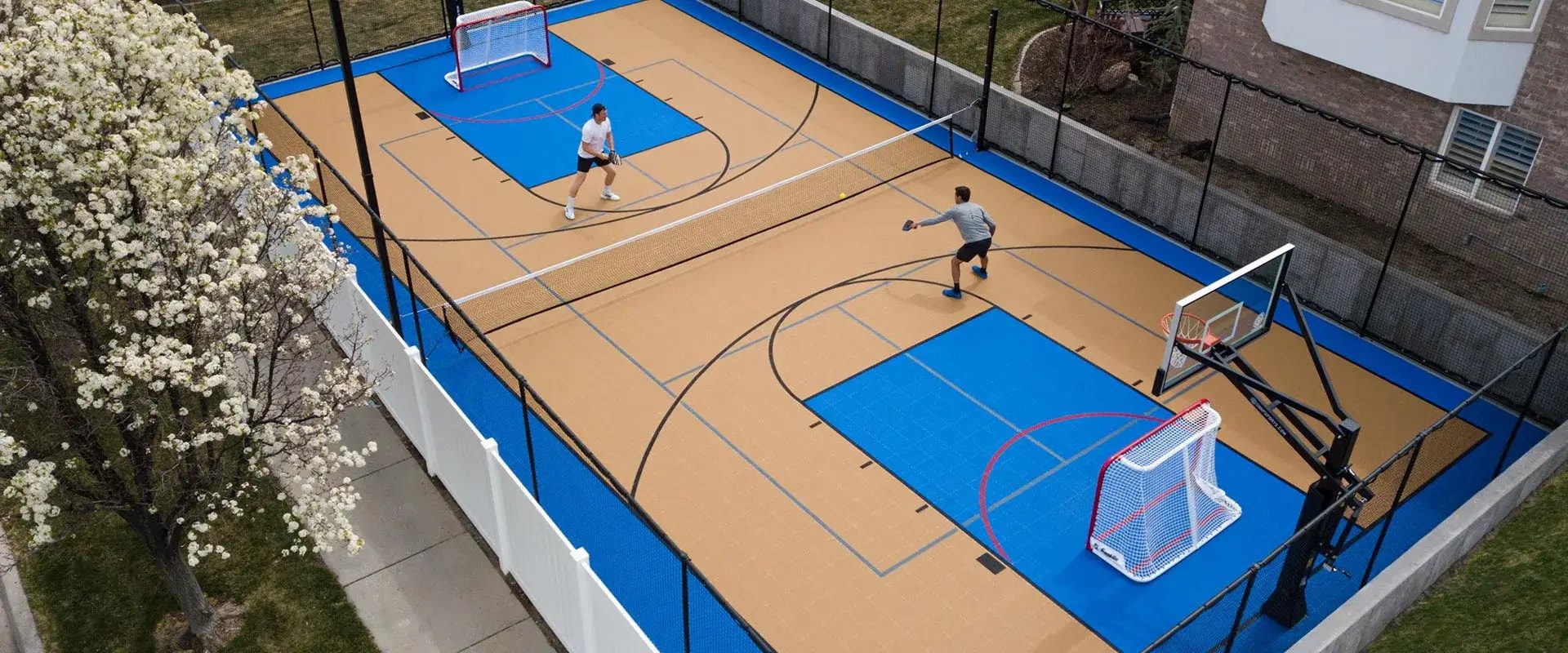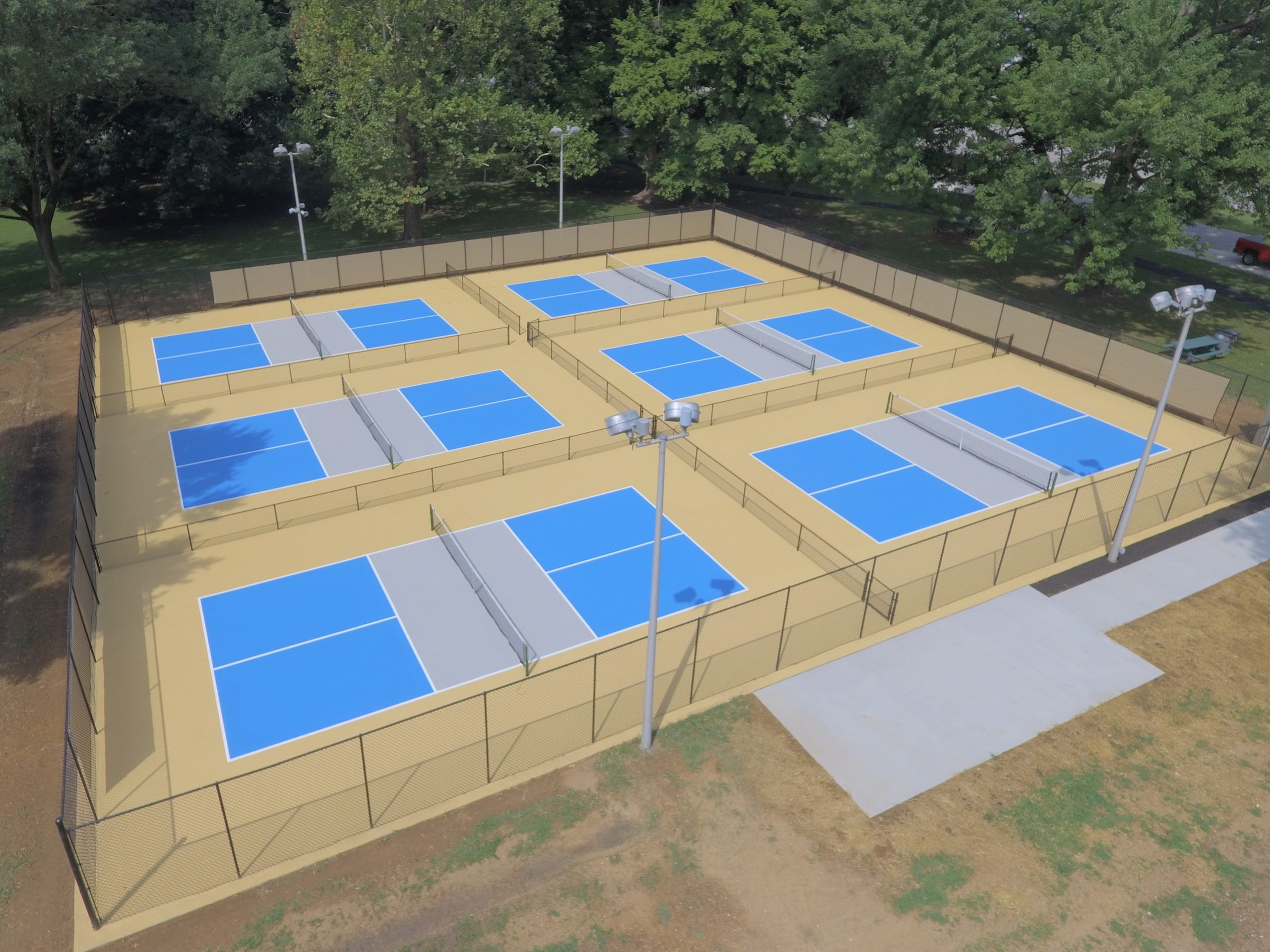How Illinois and Midwest are Leading the Way in Pickleball Courts Layout & Construction
How Illinois and Midwest are Leading the Way in Pickleball Courts Layout & Construction
Blog Article
Trick Variables in the Building And Construction of Pickleball Courts: From Website Option to Last Coatings
The building of pickleball courts includes a variety of essential factors, beginning with the choice of a proper website that stabilizes access with environmental considerations. Important aspects such as court dimensions, surface area products, and drain systems dramatically influence not just the top quality of play yet additionally the longevity of the facility.
Site Selection Standards
When starting the building of pickleball courts, it is vital to pin down the site choice standards that will guarantee optimal playability and accessibility. The location must be easily obtainable for gamers, ideally situated near domestic areas or area facilities, to motivate involvement.
Furthermore, the terrain should be degree and steady, as unequal ground can lead to safety threats and influence gameplay. Appropriate drainage is also essential; picking a site with good water drainage will help keep court conditions during damaging weather condition.
Another essential factor to consider is the availability of energies. Access to electricity and water is necessary for lights and maintenance objectives. Furthermore, proximity to car park centers is important, promoting simple access for gamers and spectators alike.
Ecological factors can not be ignored; natural color from trees can enhance player convenience, while exposure to dominating winds may interfere with play. Lastly, zoning laws and community assistance need to be taken into consideration to guarantee that the task aligns with regional standards and gets the support it needs for effective execution. By very carefully reviewing these criteria, stakeholders can produce an inviting and useful setting for pickleball enthusiasts.
Court Dimensions and Design
To make certain optimal gameplay and adherence to policies, the measurements and format of pickleball courts must be thoroughly defined. A standard pickleball court measures 20 feet in width and 44 feet in size for both songs and doubles play. The recommended design includes a non-volley area, generally described as the "kitchen," prolonging 7 feet from the internet on either side. This location is vital, as it affects gamer positioning and shot selection - Illinois and midwest.
The web height is set at 36 inches at the sidelines and 34 inches at the center, producing a minor dip that affects sphere trajectory. Court markings are just as important; lines ought to be 2 inches wide and distinct in color to make certain presence.
In addition, a barrier zone surrounding the court is advisable, typically expanding 5 to 10 feet past the sidelines and baselines to accommodate gamers' motions and improve safety. Proper format and measurements not only ensure conformity with main guidelines however also improve the general playing experience, accommodating both entertainment and affordable play. Cautious planning in these locations is critical to the successful construction of pickleball courts.
Surface Area Material Options
Selecting the appropriate surface area material for pickleball courts is critical for making sure ideal player efficiency and security. The choice of surface area can considerably affect gameplay, consisting of sphere bounce, traction, and gamer comfort.
There are several alternatives offered, each with its distinctive attributes. Asphalt is a prominent choice as a result of its sturdiness and low upkeep requirements. It gives a strong playing surface area that can stand up to various weather but might call for periodic resurfacing.
Concrete is one more extensively utilized product, providing exceptional longevity and a smooth surface. It enables consistent sphere bounce yet can be hard on players' joints, making it much less preferable for long-term play without appropriate padding.
For those looking for enhanced convenience and shock absorption, supported acrylic surface areas present a feasible choice. These surfaces incorporate you can look here a base layer with an acrylic overcoat, offering enhanced grip and a softer feeling, which is useful for reducing the risk of injuries.
Finally, artificial turf is acquiring traction, especially for multi-purpose centers. Its pop over to this site convenience and reduced upkeep requires make it an attractive option, though it may not supply the very same round feedback as traditional hard courts. Careful consideration of these options will guarantee an ideal playing atmosphere.
Drain and Illumination Considerations
Appropriate drain and effective lighting are important components in the construction of pickleball courts, considerably influencing both playability and security. Sufficient drain systems stop water buildup, which can lead to unsafe surface areas and damages to the court framework. A well-designed drain plan includes sloped surfaces and proper products to help with water stream away from the playing area - Illinois and midwest. This not only preserves the integrity of the court but also decreases downtime as a result of bad climate condition.
Illumination is similarly essential, particularly for courts meant for evening use. The positioning of illumination components must be purposefully intended to remove darkness and provide even distribution of light throughout the court.

Final Surfaces and Maintenance
After attending to water drainage and lights factors to consider, focus transforms to the last surfaces and continuous maintenance of pickleball courts. Illinois and midwest. The option of surface material is essential, as it impacts both playability and resilience. Common options include acrylic coatings and specialized sporting activities surface areas that supply ideal traction and cushioning. These coatings need to be used in several layers to guarantee resilience versus view climate aspects and use.

Seasonal upkeep might consist of resurfacing every couple of years, depending upon use and ecological elements. Effectively maintaining internet, court lines, and bordering locations is equally crucial to give a safe and satisfying having fun experience. By investing in quality surfaces and sticking to an organized maintenance routine, center proprietors can guarantee their pickleball courts remain in outstanding problem for several years to come.
Final Thought
To conclude, the effective building and construction of pickleball courts rests on precise interest to numerous vital factors. Site selection must focus on availability and surface security, while court measurements and format must follow ideal requirements for gameplay. The option of surface area product dramatically affects gamer safety and security and efficiency. Reliable water drainage and appropriate illumination contribute to court durability and visibility. High quality surfaces and a robust upkeep timetable are necessary for protecting the court's condition, enhancing the total experience for gamers and spectators alike.
Report this page